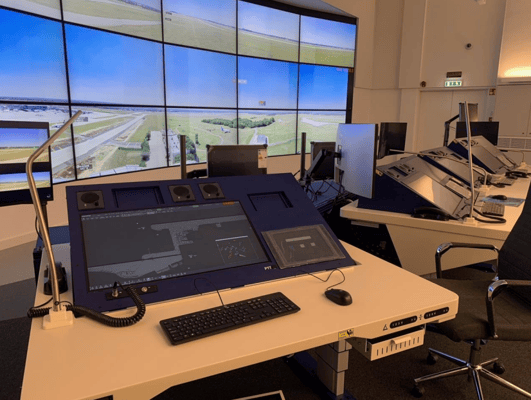EUROCONTROL organised a new edition of the FlyAI event about artificial intelligence end of April and I was lucky enough to secure a seat. The two days event was the opportunity to get updated about the status of AI in ATM and things are moving forward on many fronts.
If you think that AI in ATC means replacing controllers with AI, think again. This is one potential application in the very, very long term but it has so many implications and raises so many questions that it is not even close to happening. One take-away is that AI has many applications in the ATM context and not only in the tactical provision of separation between aircraft.
The number of applications presented at the FlyAI forum goes beyond this blog post but here is a short list to give you an idea:
- Air traffic controllers assistants (more on this later)
- Support to EUROCONTROL in their role of Network Manager, using pattern analysis to identify the impact of weather and regulations
- NOTAM interpretation and filtering according to impact, importance and relevance
- Speech recognition
- Analysis of surveillance infrastructure for monitoring purposes
There were more topics and subtopics. For example, speech recognition itself is used for various use cases: prototypes of read-back confirmation, clearances analysis for safety and statistics, pseudo-pilot for autonomous simulation training and transcription of communication for incident investigation.
Different solutions are at different levels of maturity, some are very close to being operational - or could even be in operation by the time you read this - and other are still at research and development level.
I wrote in the first paragraph that provision of separation, so replacing the ATCOs, is not for today not for tomorrow. There are multiple reasons for this, ranging from handling failure of AI to job interest but also liability and teaming with humans. This last factor triggered some interesting discussions. If AI becomes an assistant, looking over a human's shoulder and nudging them when something is not correct, how to make sure that this interaction does not come in as a disturbance?
When humans are trained to become ATCOs, they learn much more than maintaining separation in an efficient way. They learn communication, human interaction and so on. That being said, a human assistant can also be annoying to an ATCO but they know instinctively when an intervention is ok or not. And if they fail at this, they usually adjust quite rapidly when the see the reaction of their colleague, just because they are humans. AI will have to learn about this interaction too, to become a valuable "partner".
Another less exciting but nonetheless super-important topic that was discussed is the legal framework and the certification. There is progress there too and the following hierarchy of European Union has been presented and discussed:
- The basic document in Europe is the European Union Artificial Intelligence Act. This document defines four levels of AI applications and abstractly defines what has to be done to make them "legal" in Europe. It is independent from ATM applications, it is valid for all uses of AI. Note that it also make some applications like social scoring fully illegal... in the EU.
- For aviation applications, EASA issues a concept paper, based on the EU AI Act and define how it applies to aviation. At the moment of writing, the second edition of this concept paper is in proposed status.
- Getting more specific, EUROCAE workgroup 114 is working on AI topics and should produce standards, based on the concept papers.
This progress is important to make sure that when more advanced and tactical applications of AI will become more concrete, the legal framework will be ready.
The FlyAI forum was a great opportunity to get updated on those topics but also to discuss them. Some time was given to the participants after each topic and this resulted in lively discussions.
Thanks to EUROCONTROL, not only for organizing and running this forum but also for making it open and available to smaller organisations like FoxATM.
A full recording of the event is available here.




